What Information is Required on Wine Labels?
CS Labels | 2nd November 2020

Wine Labels
The information found on a wine label is important. It is something which is governed by a set of guidelines established by the UK government along with the EU. The alcohol industry has to follow these strict guidelines.
In this article, we’ll discuss wine label information in the alcoholic beverages industry. We’ll take a look at what a wine label should do, and what the label should include.
What Should Wine Labels Do?
Your wine label should have all of the relevant information shown clearly so that the consumer can easily read and understand it. The wine label should be integral to the product. It must also not be part of any packaging which might be thrown away before the bottle of wine is consumed. This means that if you have a bottle of wine in a box, the information must be printed on a label on the actual bottle and not printed onto the box.
For wines in the United Kingdom, there must be a reference on the bottle to the Drinkaware campaign as well as the Portman Group.
The wine label should not promote any form of anti-social behaviour. This means that it must not reference drug use, violence, or bravado. All labels on wine bottles must be clear about the actual alcohol content and it should not seek to downplay the strength. For example, it should only emphasise when a wine is 'low alcohol' when it is considered to be lower than the normal amount.
The label on the bottle should also not promote any form of sexual activity, binge drinking, drunken behaviour, or anything illegal.
While labels may express ideas about your brand, this should not conflict with any of the legal guidelines. The name of the wine mustn't also break any of these guidelines.
What Information Is Required on A Wine Label?
The labelling of your product can include many different details. For instance, it could include the ingredients, their sources or the production methods of the wine.
The legal minimum requirements for labelling for the alcoholic beverages industry include:
- The name and address of the supplier or the bottler of the wine
- The country, or countries of origin (for instance, you may have a blend of wines from several countries)
- The quantity of the product
- The alcoholic strength measured by volume as long as the wine is over 1.2%
- Any allergy information
- The use-by date for any drinks with less than 10% alcohol by volume.
For wines, there are specific requirements. Traditional terms of production such as reserva, grand reserva, and chateau may be used to let consumers know about the production method. The variety and the vintage of the wine can be added to the label. Where more than 85% of a wine is made from a grape or 100% is made from two varieties. Vintage wines need to have at least 85% of the vintage that meets the protected designation of origin. The bottle must also contain drinking guidelines. This includes the number of units in the entire bottle as well as the number of units per recommended serving size.
The Final Print
Wine labels aren’t just about the information, as vital as it is to include the required information, the design of your label is just as important. At CS Labels, all of our labels are manufactured digitally; giving us the ability to produce sustainable, high-quality digitally printed labels that help make your product stand out from the competition.
Interested in finding out more about our wine label solutions? Get in touch today and speak to a member of the CS Labels team on 01902 365840 or send us an email on sales@cslabels.co.uk. Alternatively, you can use the contact form below.

Wine Label
